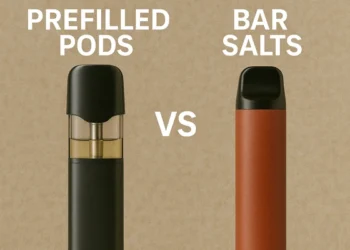Attention Deficit Hyperactivity Disorder (ADHD) affects people of all ages, and one of its most significant but sometimes overlooked symptoms is inattention. This can appear as difficulty staying focused, forgetfulness, or challenges with organisation. For adults, these symptoms can affect work, relationships, and day-to-day responsibilities. When a clinician carries out an ADHD assessment for adults, part of the process is to establish whether inattentive symptoms have been present since childhood and whether they continue to disrupt daily life.
Inattention can be harder to recognise than hyperactivity because it is not always accompanied by visible restlessness. Instead, it may appear as missed deadlines, misplaced items, or feeling mentally scattered during important conversations. During an ADHD assessment for adults, clinicians use a structured approach to explore these patterns and understand their impact across different areas of life. Having access to experienced specialists, such as those at ADHD Certify, can help ensure assessments are both thorough and tailored to each individual’s circumstances.
Why Inattention Can Be Hard to Recognise
Inattention in ADHD is not the same as boredom or lack of interest. It can involve mentally drifting off in meetings, forgetting appointments, or struggling to begin tasks that require sustained concentration. Adults often develop coping strategies to hide these difficulties, which can make them harder to detect. This is why an evidence-based, detailed assessment is essential.
Professional ADHD Assessment
A formal ADHD assessment typically begins with a conversation about symptoms and a review of personal history. Clinicians look for patterns of inattention that have been present before the age of twelve and occur in multiple settings, such as at home, at work, or in social situations. At ADHD Certify, assessments follow established clinical guidelines while considering the individual’s unique experience.
Detailed Clinical Interviews
The clinical interview forms the backbone of the assessment. It involves open-ended questions about work habits, personal organisation, and ability to sustain attention. Clinicians ask for specific examples, such as missing important emails or finding it hard to complete reading tasks. The goal is to establish a clear pattern of symptoms over time.
Standardised ADHD Rating Scales
Clinicians often use tools such as the Adult ADHD Self-Report Scale (ASRS) or Conners’ Adult ADHD Rating Scales (CAARS) to measure symptom severity. These are usually completed by the individual and sometimes by a partner, family member, or colleague. Multiple viewpoints provide a clearer picture of how symptoms affect different areas of life.
Collateral Information
Collateral information, such as old school reports or work performance reviews, can offer valuable insight. Family members or friends might recall examples of inattention going back many years. These records and observations help confirm whether symptoms are long-standing rather than recent changes.
Ruling Out Other Conditions
Other medical or psychological issues, such as anxiety, depression, sleep disorders, or thyroid problems, can also cause attention difficulties. A thorough ADHD assessment for adults includes ruling out these possibilities through medical history, questionnaires, and, if needed, physical tests. This step ensures that treatment targets the correct underlying cause.
Neuropsychological Testing and Specialist Evaluation
In some cases, clinicians use neuropsychological testing to assess areas like working memory, processing speed, and executive functioning. These structured tasks provide objective data about how attention works in different situations. While not always necessary, they can be particularly helpful when the diagnosis is unclear.
Understanding the Context of Symptoms
Everyone experiences lapses in attention, particularly during stressful or monotonous situations. What sets ADHD apart is the persistence, frequency, and impact of these difficulties. Clinicians look for symptoms that occur in multiple settings and have been present since childhood. They also consider whether lifestyle changes or environmental factors might explain the difficulties.
Diagnostic Criteria for ADHD
According to the DSM-5, adults must display at least five symptoms of inattention for six months or more, in a way that is inconsistent with their developmental level. Symptoms must cause significant impairment in daily functioning, be present before the age of twelve, and occur in at least two settings. Meeting these criteria confirms that the challenges are part of ADHD rather than a temporary issue.
Why Proper Assessment Matters
A correct diagnosis opens the door to appropriate support, whether through therapy, coaching, lifestyle changes, or medication. It can also help individuals understand their own behaviours and reduce the self-blame that often comes with undiagnosed ADHD. Services like ADHD Certify aim to make this process more accessible, offering assessments that are both evidence-based and compassionate.
Final thoughts
Assessing inattention in ADHD involves more than a checklist. It is a careful process that blends clinical expertise, personal history, and objective measures. The right assessment can be life-changing, providing clarity and a foundation for effective support.
For those who suspect ADHD may be affecting their focus and organisation, starting the journey with a professional evaluation can be the first step towards better understanding and management.











